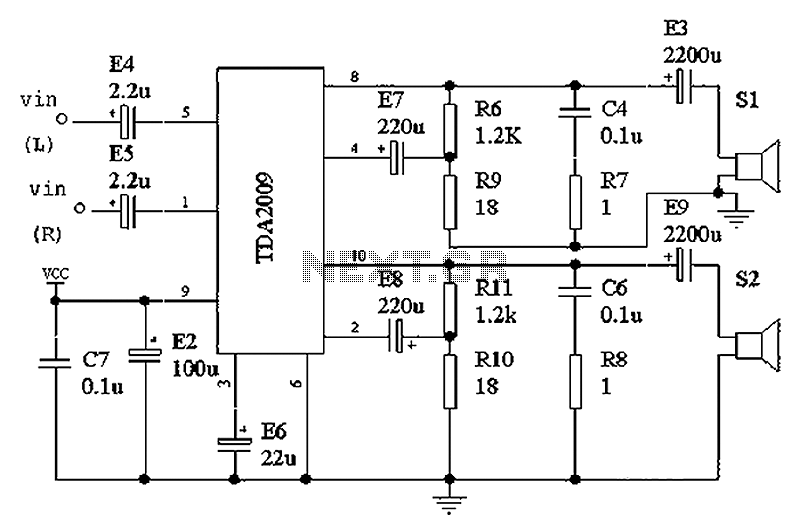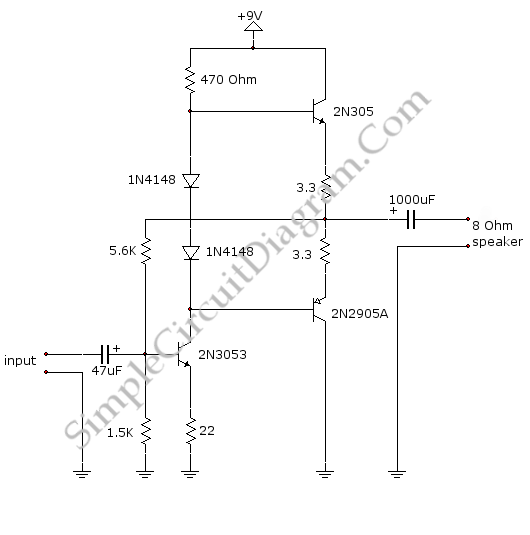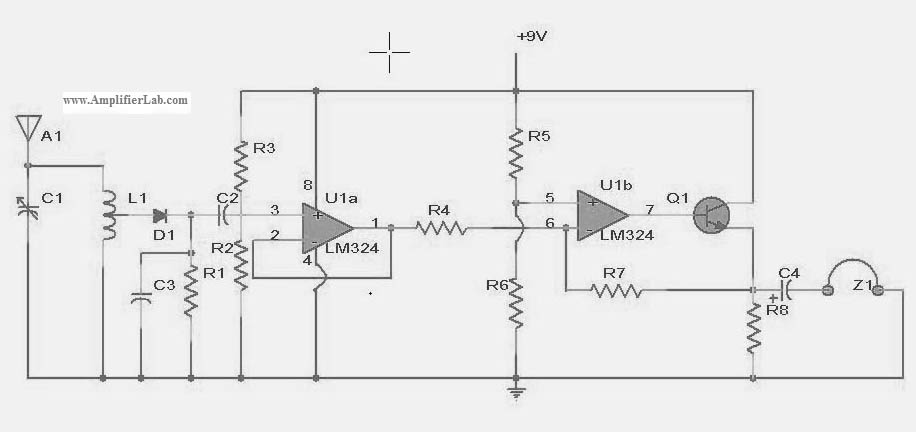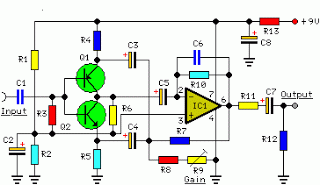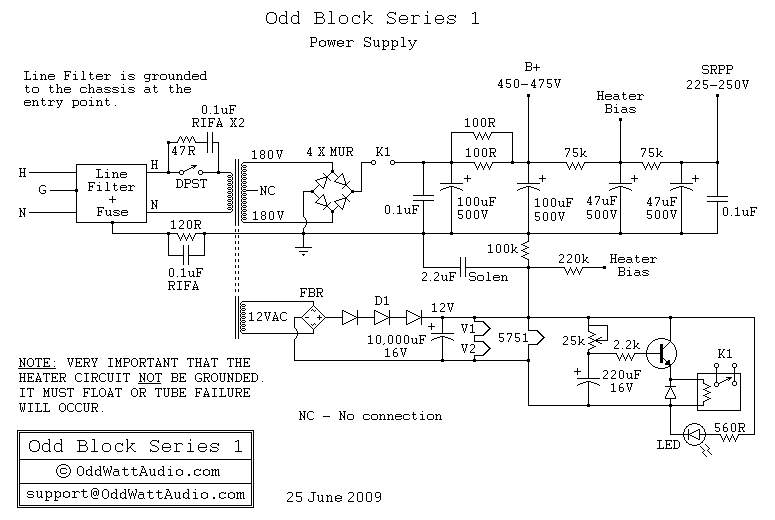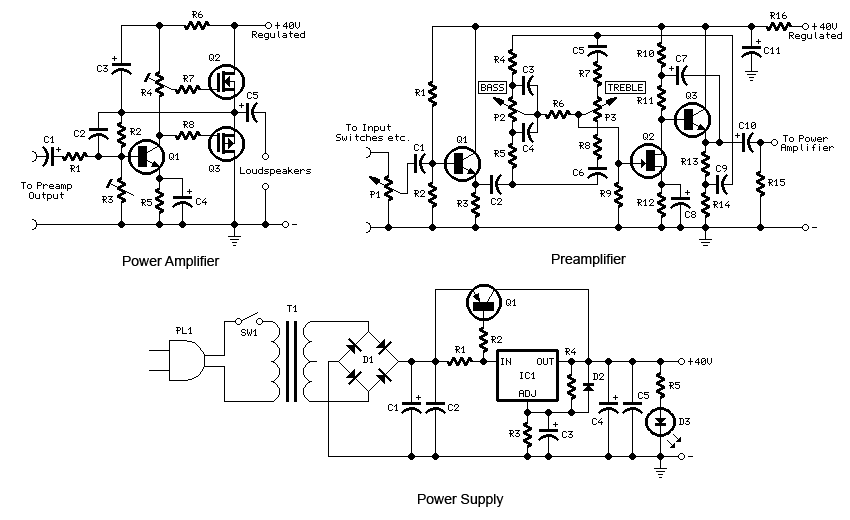
Tone-control audio amplifier
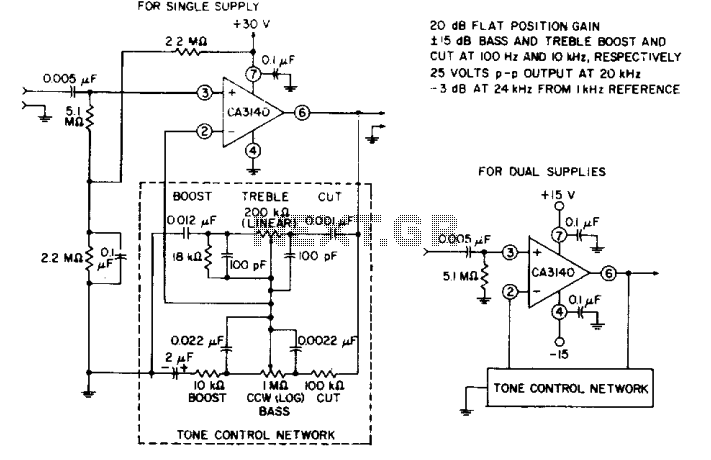
The circuit effectively utilizes the high slew rate, wide bandwidth, high input impedance, and high output voltage capability of the CA3140 BiMOS operational amplifier. The wideband gain of this circuit is equal to the ultimate boost or cut plus one, resulting in a gain of eleven in this instance. For a 20-dB boost or cut, the input loading is approximately equal to the resistance from terminal 3 to ground.
The circuit design leverages the capabilities of the CA3140 BiMOS operational amplifier, which is known for its superior performance in terms of speed and bandwidth. The high slew rate allows for rapid changes in output voltage, making it suitable for applications requiring fast signal processing. The wide bandwidth ensures that the amplifier can handle a broad range of frequencies without significant attenuation, which is critical in high-fidelity audio applications or RF signal processing.
The high input impedance characteristic of the CA3140 minimizes loading effects on the preceding stage, allowing for accurate signal representation without distortion. This feature is particularly beneficial in sensor applications where the source impedance may be high. The output voltage capability of the amplifier ensures that it can drive loads effectively, providing versatility in various circuit configurations.
With a designed gain of eleven, the circuit provides a significant amplification factor, which is essential for applications requiring a strong output signal. The gain is calculated as the ultimate boost or cut plus one, where a 20-dB boost corresponds to a voltage gain of approximately 10, leading to a total gain of eleven when considering the input signal.
In terms of input loading, the resistance from terminal 3 to ground plays a crucial role. For a 20-dB boost or cut, the input loading is effectively determined by this resistance, ensuring that the circuit maintains stability and performance under varying load conditions. This aspect is vital for preserving the integrity of the input signal and ensuring that the amplifier operates within its optimal range.
Overall, this circuit exemplifies the effective application of the CA3140 BiMOS op amp's features, providing a robust solution for signal amplification with minimal distortion and high fidelity.The circuit makes excellent use of the high slew rate, wide bandwidth, high input impedance, and high-output voltage capability of the CA3140 BiMOS op amp. The wideband gain of this circuit is equal to the ultimate boost or cut plus one, in this case a gain of eleven.
For 20-dB boost or cut, input loading is essentially equal to the resistance from terminal 3 to ground.
The circuit design leverages the capabilities of the CA3140 BiMOS operational amplifier, which is known for its superior performance in terms of speed and bandwidth. The high slew rate allows for rapid changes in output voltage, making it suitable for applications requiring fast signal processing. The wide bandwidth ensures that the amplifier can handle a broad range of frequencies without significant attenuation, which is critical in high-fidelity audio applications or RF signal processing.
The high input impedance characteristic of the CA3140 minimizes loading effects on the preceding stage, allowing for accurate signal representation without distortion. This feature is particularly beneficial in sensor applications where the source impedance may be high. The output voltage capability of the amplifier ensures that it can drive loads effectively, providing versatility in various circuit configurations.
With a designed gain of eleven, the circuit provides a significant amplification factor, which is essential for applications requiring a strong output signal. The gain is calculated as the ultimate boost or cut plus one, where a 20-dB boost corresponds to a voltage gain of approximately 10, leading to a total gain of eleven when considering the input signal.
In terms of input loading, the resistance from terminal 3 to ground plays a crucial role. For a 20-dB boost or cut, the input loading is effectively determined by this resistance, ensuring that the circuit maintains stability and performance under varying load conditions. This aspect is vital for preserving the integrity of the input signal and ensuring that the amplifier operates within its optimal range.
Overall, this circuit exemplifies the effective application of the CA3140 BiMOS op amp's features, providing a robust solution for signal amplification with minimal distortion and high fidelity.The circuit makes excellent use of the high slew rate, wide bandwidth, high input impedance, and high-output voltage capability of the CA3140 BiMOS op amp. The wideband gain of this circuit is equal to the ultimate boost or cut plus one, in this case a gain of eleven.
For 20-dB boost or cut, input loading is essentially equal to the resistance from terminal 3 to ground.
